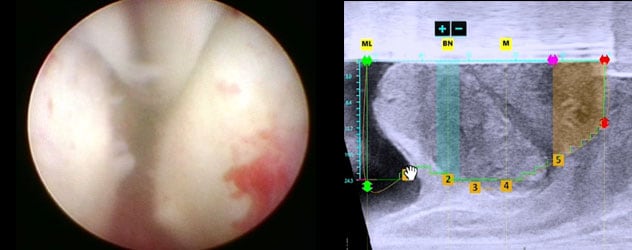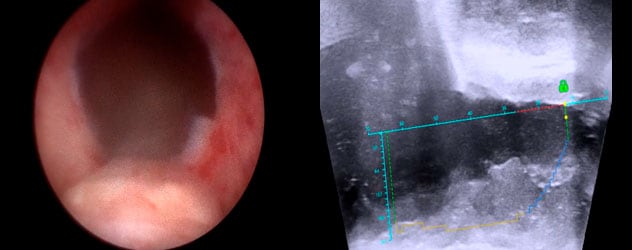Oct. 04, 2024
Benign prostatic hyperplasia (BPH) is one of the most common diagnoses in men over the age of 50. It occurs as the prostate enlarges with age and can cause several bothersome urinary symptoms. The most common symptoms are urinary urgency, frequency, hesitancy and a weak urinary stream. The size of the prostate does not always correlate with symptoms, but these symptoms can worsen with increasing age. Initial treatments often include behavioral modifications and medications, but if these fail to improve symptoms, then surgery is the next best option.
The goal of a BPH surgery is to open the prostatic urethra to allow for a stronger urinary stream and to help facilitate complete bladder emptying. Most of these procedures are minimally invasive and done through the urethra without any incisions. The best surgical option is often individualized for each patient depending on the prostate size, symptom severity and patient priority in terms of sexual function preservation. Larger prostates over 80 grams are often limited in surgical choices, and these options often have a greater risk of incontinence and sexual side effects, such as retrograde ejaculation.
Meghan A. Cooper, D.O., a urology consultant at Mayo Clinic in Rochester, Minnesota, brought Aquablation to the practice to treat this niche area within the BPH population. "We're excited to offer this new surgical BPH option to our patients, and we've seen a large influx of patients who are looking specifically for this treatment," says Dr. Cooper.
The therapy can treat larger prostates over 80 grams, while minimizing the risk of incontinence and sexual side effects compared with the current BPH surgeries that are offered. In most studies, it was shown to have a < 10% risk of retrograde ejaculation compared with a 75% or higher risk with the other BPH procedures. Also, the incontinence rate was estimated at < 5% compared with 30% or higher with prostate enucleation.
 قبل العملية
قبل العملية
انسداد الإحليل البروستاتي في تنظير المثانة والتصوير بالموجات فوق الصوتية
Dr. Cooper compares the procedure to a "pressure washer" that ablates the prostatic tissue without heat to mitigate the risks of urinary leakage and retrograde ejaculation. The procedure takes around 45 minutes to perform and uses transrectal ultrasound to map the parameters and contour of the prostate for a precise treatment plan based on each patient's specific anatomy. This allows for a tailored approach that can be modified throughout the treatment based on each person's intraoperative response.
 بعد العملية
بعد العملية
انفتاح الإحليل البروستاتي في تنظير المثانة والتصوير بالموجات فوق الصوتية بعد ثلاثة أشهر من عملية الاستئصال بضغط الماء
Typically, patients stay overnight in the hospital for observation and can leave the next morning. They maintain a catheter for 2 to 3 days postoperatively. After catheter removal, they will continue to slough tissue over the next 6 to 8 weeks of healing but typically resume their normal activity within 2 to 3 weeks after surgery.
Research has been promising for this new treatment, with significant improvement in urinary symptoms and good durability with low retreatment rates of < 3% at the five-year mark. Aquablation has also been shown to be successful in patients with acute urinary retention who are catheter dependent. After the procedure, many of these patients are catheter-free and able to void completely on their own.
For more information
Refer a patient to Mayo Clinic.